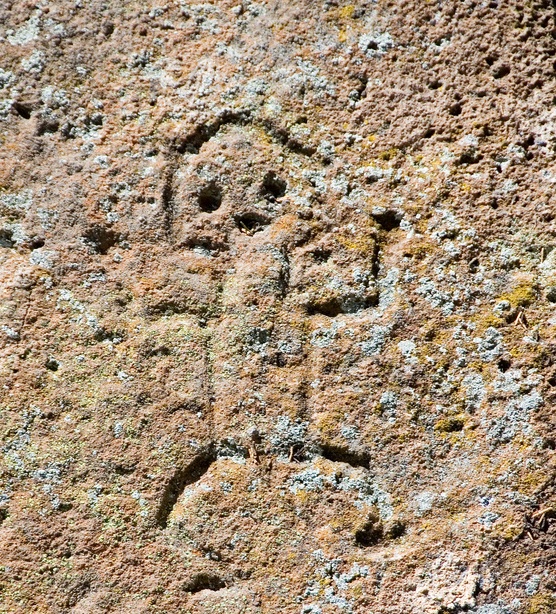You walk out the door after yoga class, soothed, settled, and mysteriously both more grounded and lighter at the same time. A day passes, or perhaps two, and you have time to practice.
So what was that preparation for reverse triangle that made the full pose so much more accessible? What sequence led up to headstand? What was that restorative pose that felt so good? If you’re like most of us, you won’t have a clue – unless you took notes.
Ever since I was given my first diary at age nine (pink, with a lock), I’ve been keeping intermittent notes on almost everything, including yoga. I have more partially filled yoga notebooks than I’d like to admit to, most of them containing lists of poses.
Lately I’ve converted to making yoga notes with stick figures, and I think I’m on to something.
Here are five good reasons to start drawing:
1. Stick figures will help you remember what you learned in class.
This is especially useful if you’re a beginning student, and suffering from yoga amnesia: you know it made you feel good; you just can’t remember how.
As soon as you can after class, jot down some quick drawings. Even drawing just one pose will help. With stick figures, you won’t need to know the Sanskrit names for the poses, and later on you won’t be wondering what you meant by “butterfly” pose either.
2. You’ll create a record of actions, not just of poses.
Despite being simple, stick figures can be very expressive. The varied thickness of the lines alone will remind you of how your chest expanded, or how your front thighs pushed back. I like to add arrows for emphasis, and brief annotations. With stick figures, what used to take me three pages of laborious typing can be conveyed in one page, in much less time, and in a more easily readable form.
3. When you draw stick figures, you experience the poses through different channels. The combination of eye, hand and memory lets me experience the pose again and take my understanding deeper.
4. If you’re keeping a practice record, or planning classes, seeing the practice in stick figures will show you the flow of the work in a way that words can’t match. Enough said.
5. Drawing stick figures is fun, and it can help you beat back your perfectionism. Children draw for pleasure, adults, not so much, especially once we start comparing what we draw to the professionally rendered imagery that surrounds us. I’ve tried much harder than you’d imagine possible to draw a convincing handle on a mug, and I still can’t do it. My sticks are rough and ready, and that’s okay by me. Sometimes I give them smiles.
If you Google “stick figures for yoga” you’ll find a lot of places to spend money online. Most of them offer collections of figures already drawn. Some of them you can modify by dragging the cursor, some are just meant to be copied into sequences. Yoga Flavored Life has a downloadable collection of 108 pleasant sticks for $27.
There’s even a free yoga stick figures font.
You can download a collection of 237 stick figure poses for free – or at least in return for signing up to an email list – at Kula Yoga. It’s worth doing – these sticks can be a helpful guide to drawing complex poses. But they don’t have the feel of Iyengar poses, and it might take you longer to find the stick figures on the chart than to draw your own.
Mikelle Terson’s How to Draw Yoga Stick Figures ($29.95) is the most useful resource I’ve found. I bought it, which is why I also know that it’s bulky and heavy, and to have it mailed outside the US will cost you more than the book itself. If it ever becomes available as a download, I’ll let you know.
One less obvious stick-figure resource is eminent Canadian Iyengar teacher Marlene Mawhinney’s 40 Day Sadhana Manual.
It has lovely stick figures, with a real Iyengar feel to them. (And, as a not inconsiderable bonus, you’ll receive an excellent practice plan, whether you use it for a 40-day sadhana or not.) To order a copy of the manual, call the Toronto Yoga Centre, at 416-482-1334, or email yoga@yogacentretoronto.ca. Cost is $25, plus HST and shipping and handling.
Google “how to draw stick figures” without specifying yoga, and you’ll find some useful short videos that are worth watching.
But really, it’s not that complicated. Time to embrace your inner pre-historic artist. Get a sketch pad, pick up your pen, and you’re good to go.
Do you have a favorite way of recording your practice, or the classes you take? Do tell. I’d love to hear about it.
Petro glyph photo courtesy of Paul and Jill via Flickr.
If this was your kind of post, you might also like:






Comments on this entry are closed.
Eve,
Being a visual learner, I have been drawing stick yoga figures from day one. I love this form of taking notes and recording what I have learnt from classes and this way I also able to plan what I am going to teach. Arrows are added to direct the proper way the body/muscles move. Yes, I do have binders of stick people notes for resources. Loving it and glad I am not an odd one.
Happy Thanksgiving! Thanks for being my teacher. Loura
Hey Loura,
I’d love to see your sticks! Why not bring some into class – maybe I can pick up some pointers.